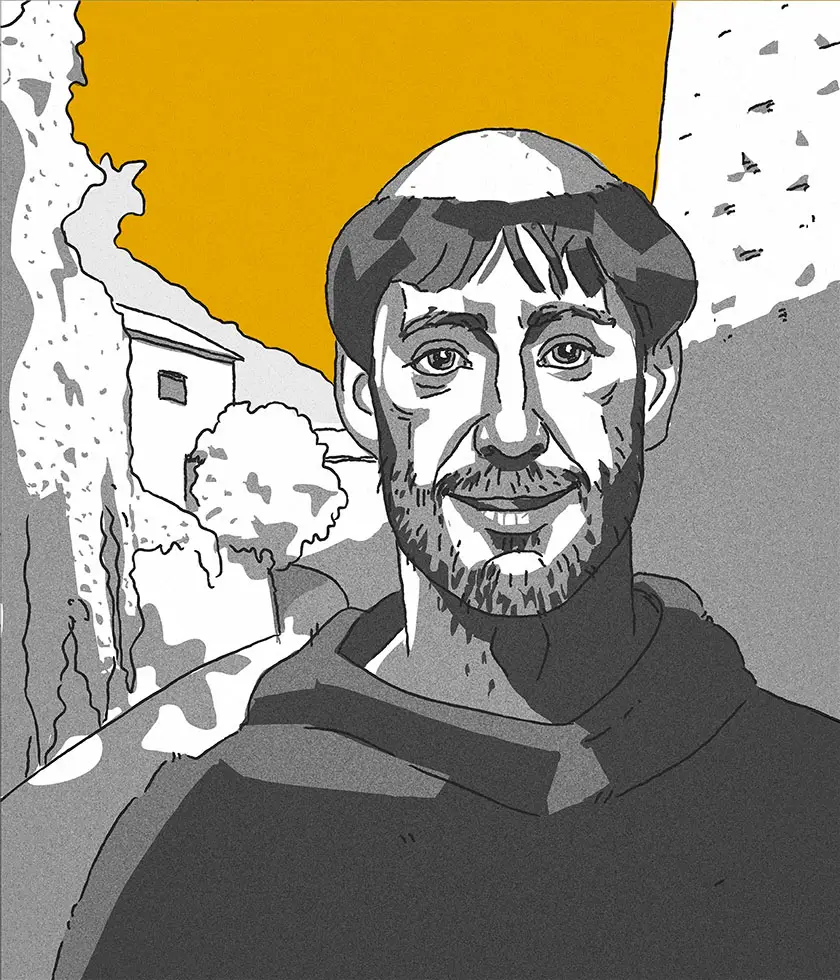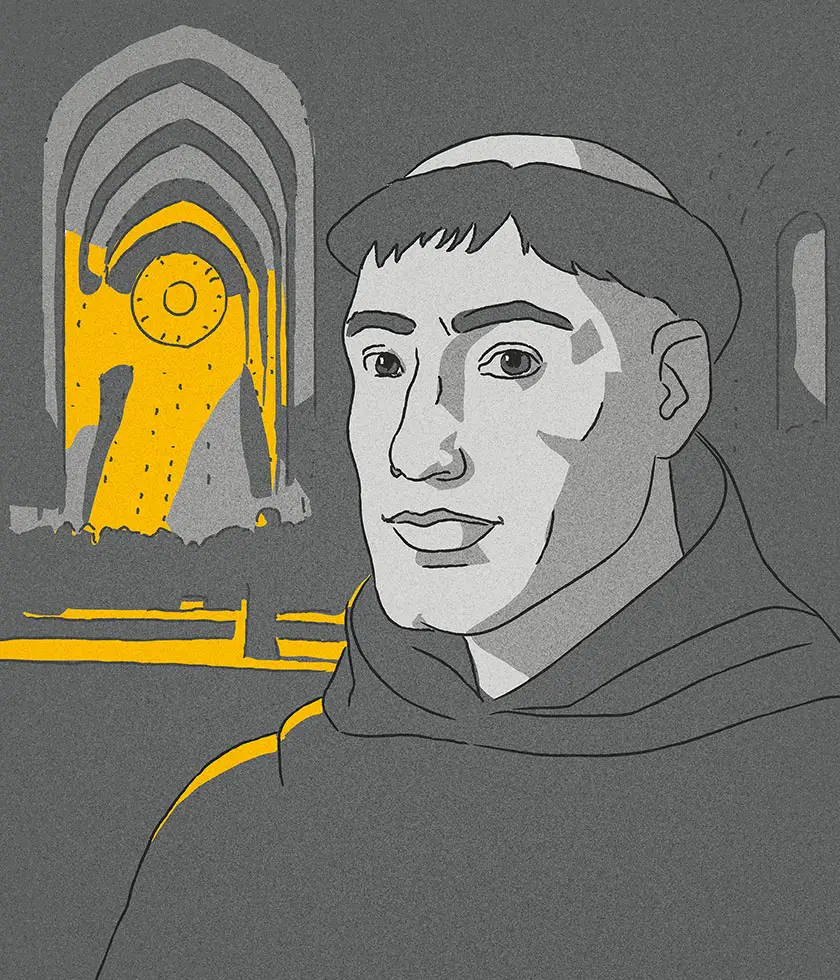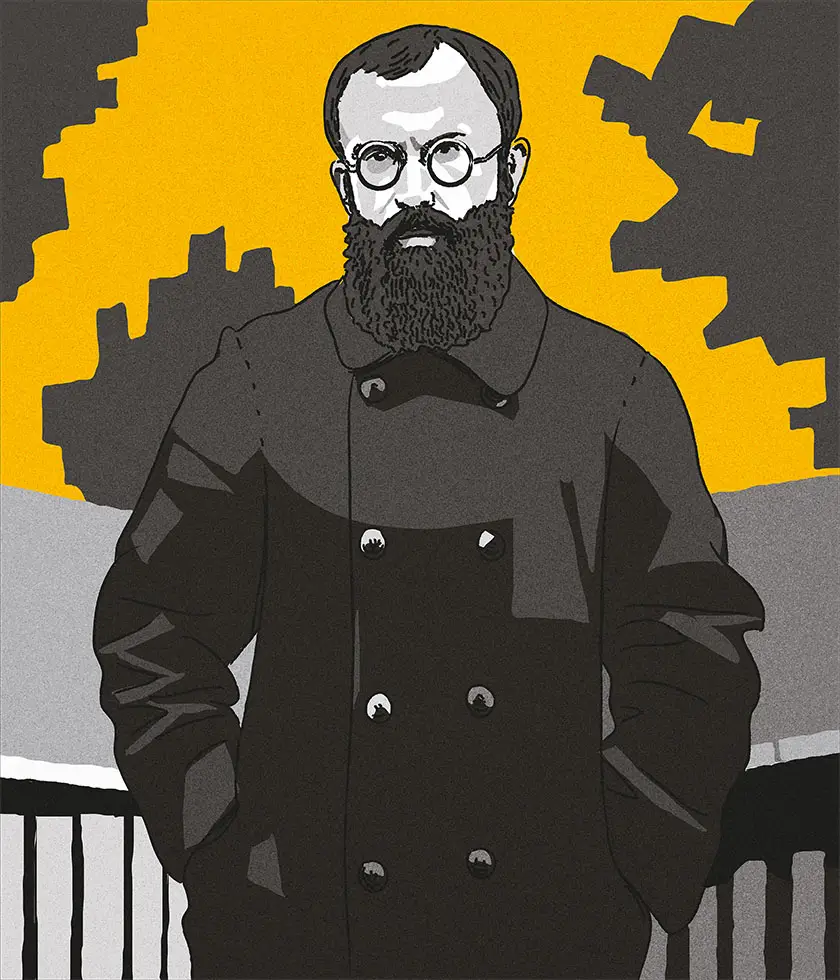
lesser brothers
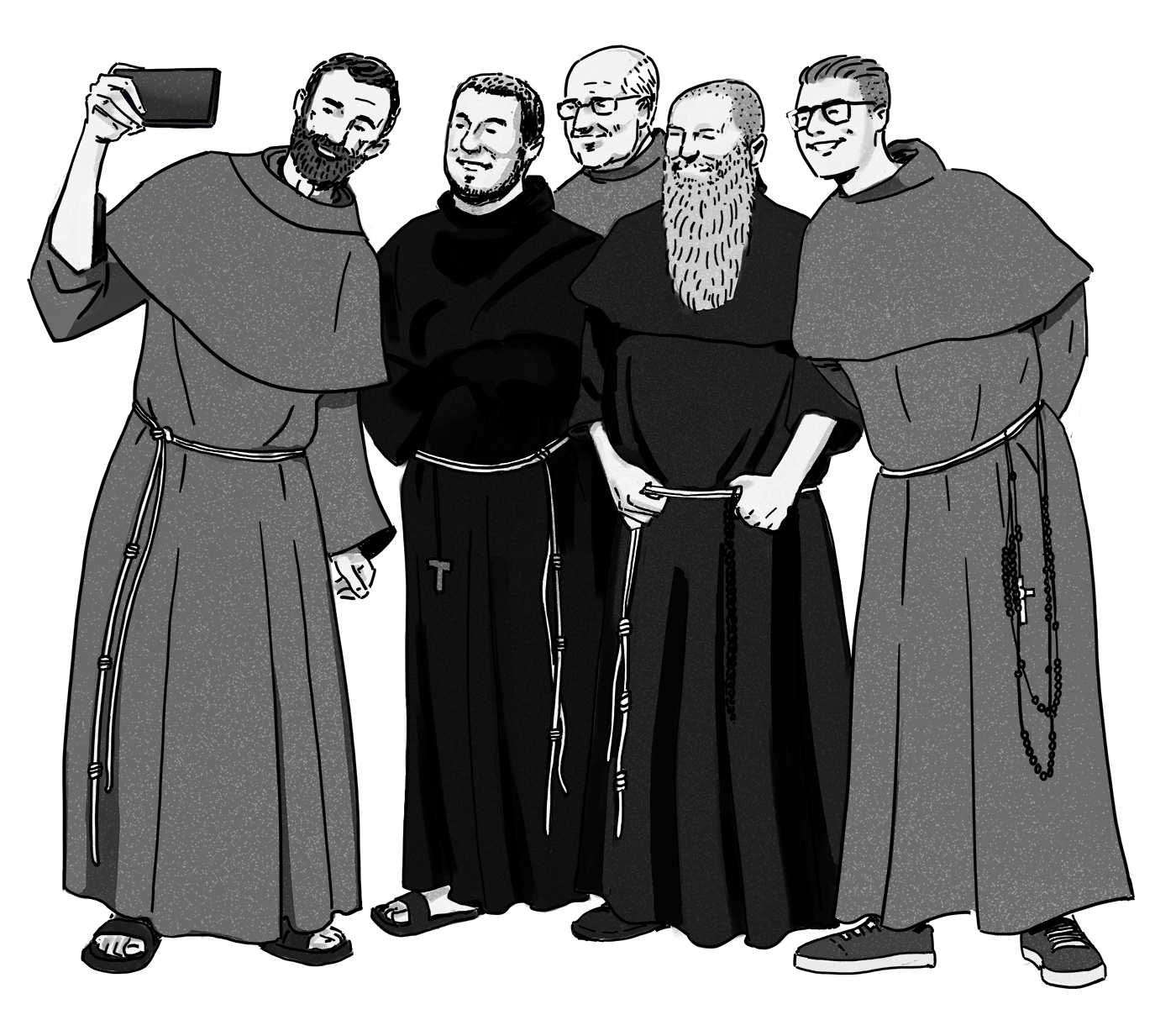
Colloquially: people call us "Franciscans," but St. Francis of Assisi, who is the founder of Franciscan Order, wanted us to be called "Friars Minor," which informally means “Lesser Brothers.” Why exactly does that mean?
The times in which St. Francis lived clearly divided people into two categories; the very rich and the very poor; those who’s words were considered important and those whose words didn’t count; those who were important and those who were unimportant. In summary: those who were greater and those who were lesser.
Francis realized that the God he loved had chosen to become ‘lesser’. It was the humility of God, who as Creator and Lord of all things, who humbled himself to becomes lesser so He could be servant of all.

So Francis in following this example of Christ, also considered himself to be lesser; and he wanted his brothers in the community he was forming to be ‘lesser’ as well. That is what gave St. Francis the vision as to which direction he should lead his new community.
It was this vision that led to the birth of this new community which would later be called the Friars Minor. However, the work that God began to do in the heart of Francis started when he was a young boy in Assisi.

Francis was called the "King of Assisi's youth"; and he would give up the comfortable life his wealthy father provided for him. He would spend a lot of time alone with God discovering His mysterious presence in nearby Catholic Churches. Francis then began to break down the barriers that separated the people by serving and helping the lepers of Assisi.


As a result, people began to notice the young Francis’s transformation. It wasn't long before others started showing the desire to live like him.
In the words of Francis, they "sought the counsel of the Lord". It was by His words that the first brothers of the community (Bernard of Quintavalle and Peter Cattani) confirmed their desire to follow Francis. A few months later there were twelve brothers in all.
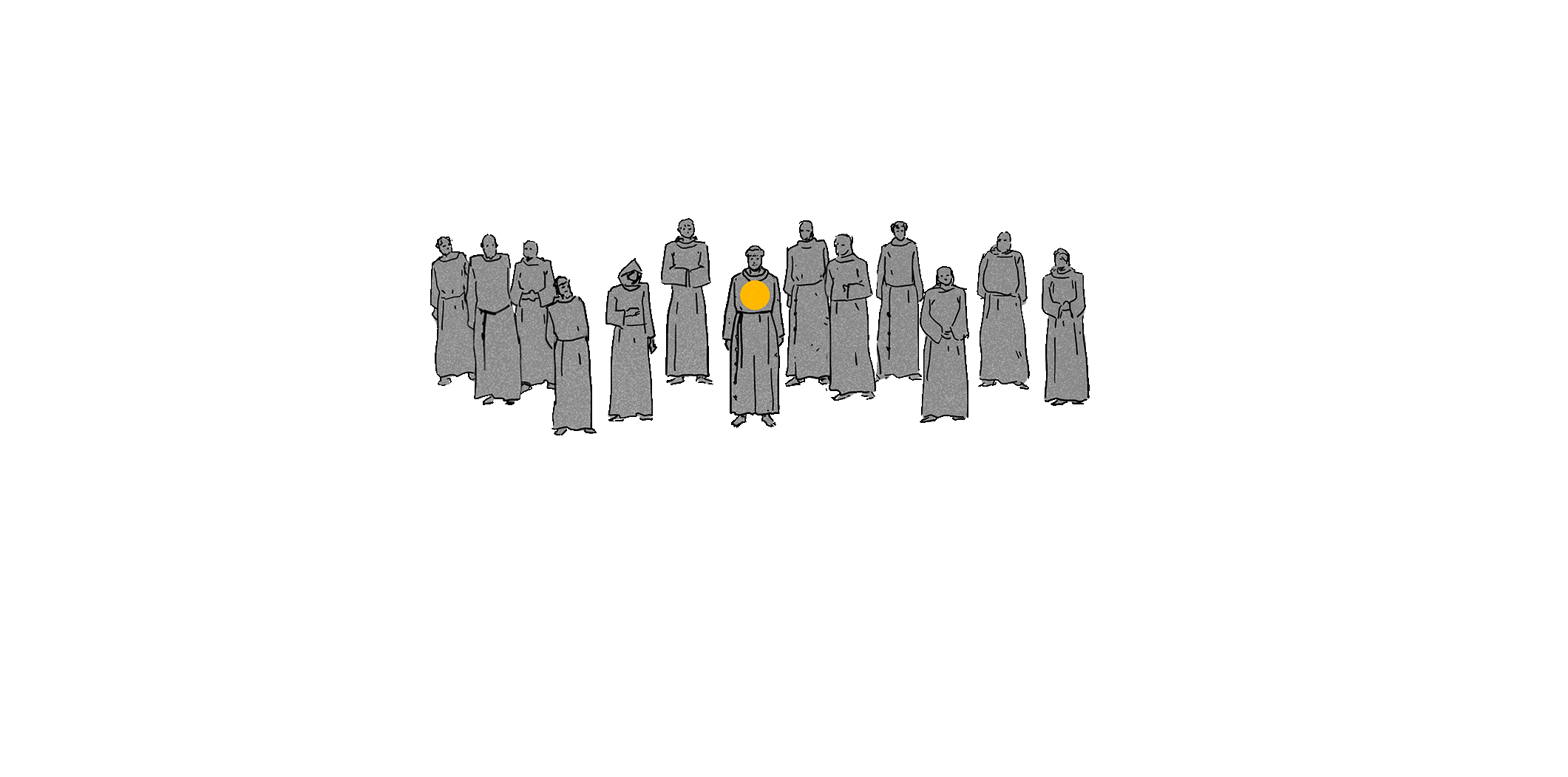
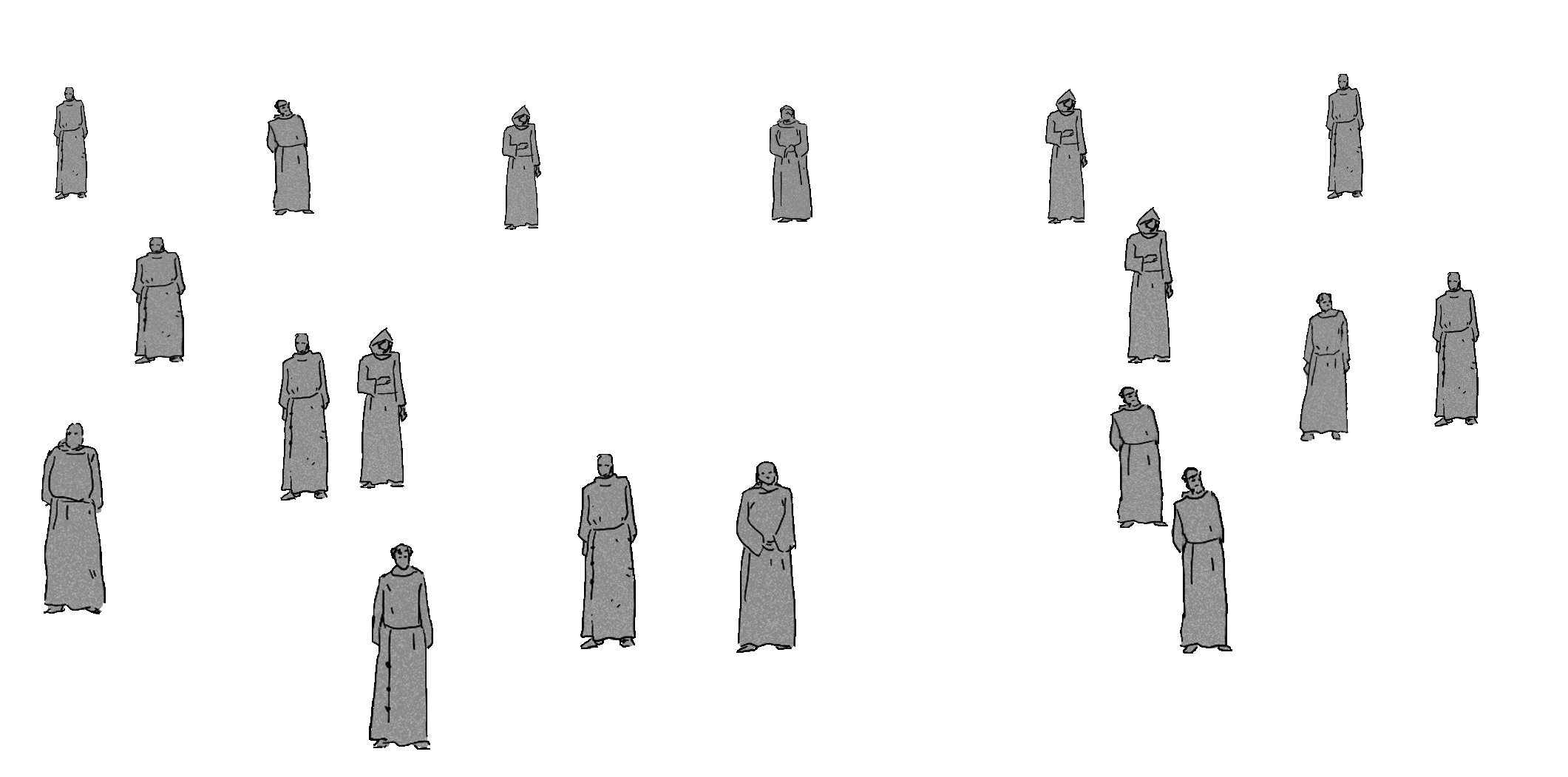
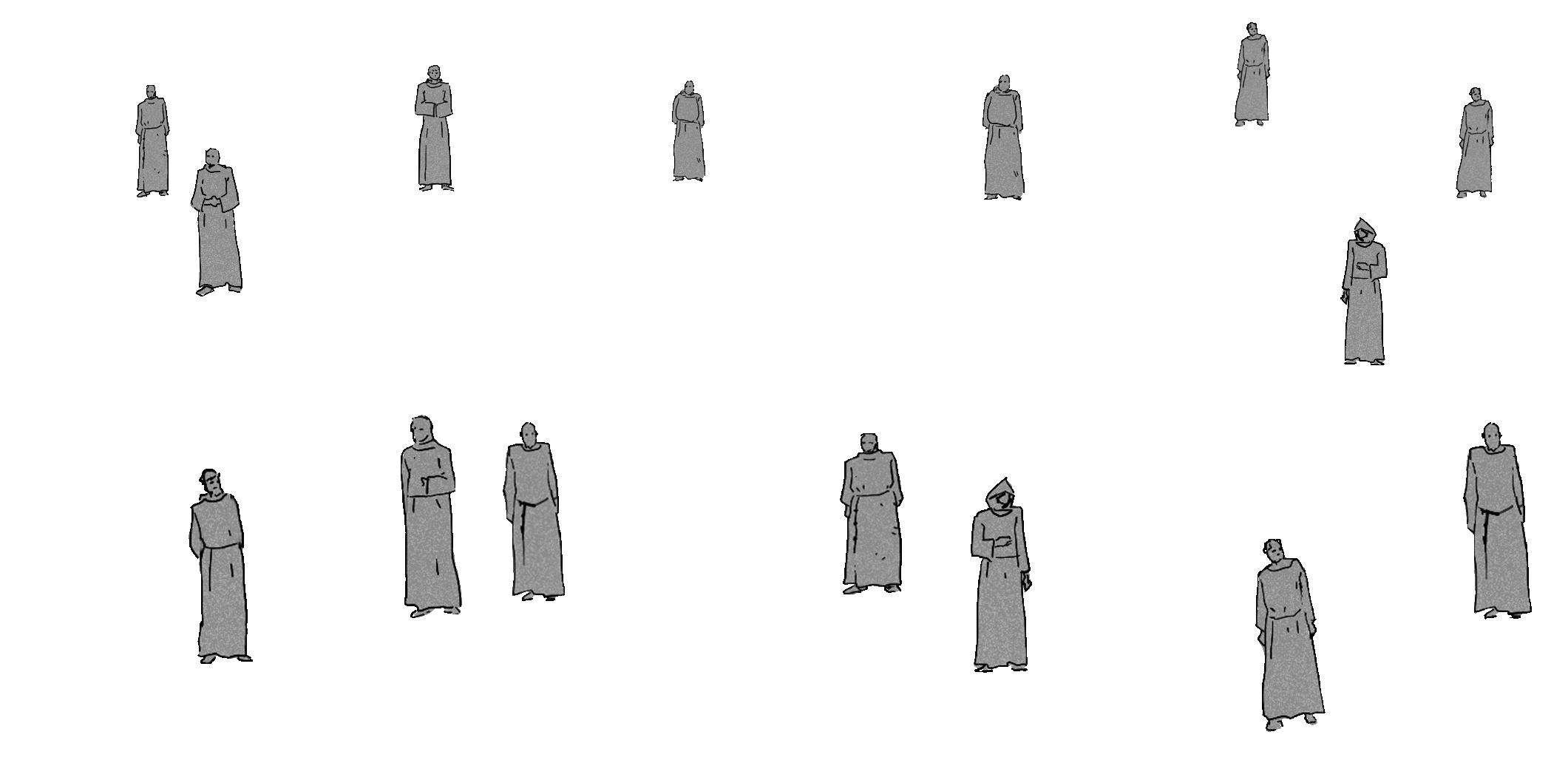
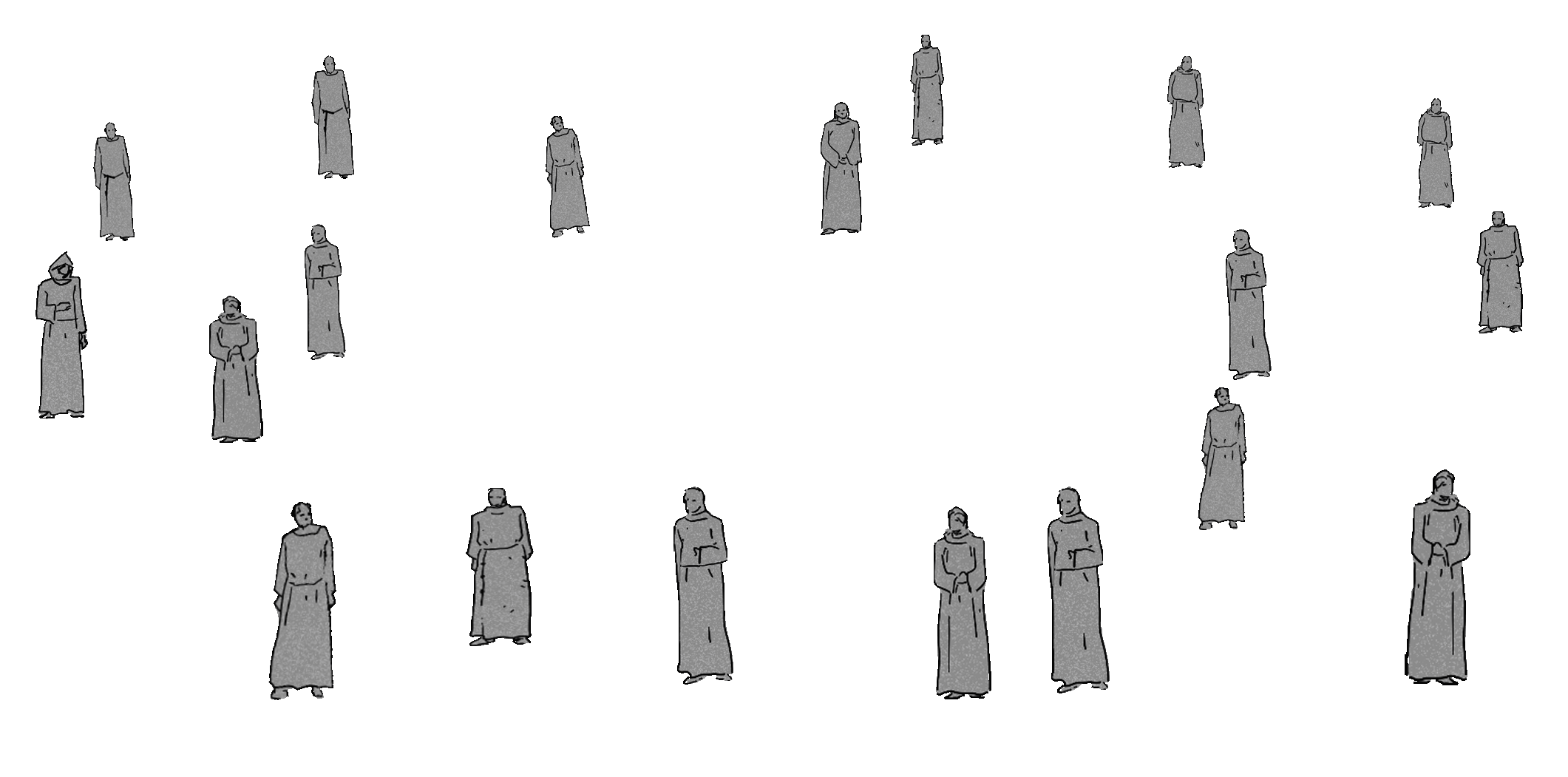
Then In 1209, Francis and the brothers of the community went to Rome to ask Pope Innocent III to formally recognize this new way of life they were living in the Church. A life of being ‘lesser’ by detachment from worldly goods and possessions and serving God.
The Pope granted their request by formally recognizing the name of the Friars Minor and their presence in the Church. Although the official text of the Rule of the Order was not approved until 1223 by Pope Innocent III's successor (Pope Honorius III), the year 1209 is considered the inauguration and official start of the Franciscan Order.
After that, the new Order started to grow rapidly.
By the time St. Francis died in 1226 there were close to
five thousand brothers in the Order.
This growing number of brothers in the community dictated that changes were needed in the Order. This meant they had to adjust the original paths Francis and his companions had initially established.
With such a large group the community needed to establish some structure. For example, the aging friars would need a place to live along with those who were leading a life on the road in accordance with the first ideals. Against this backdrop, some differences of opinion were already becoming apparent during Francis’ lifetime.
In addition to that, there were brothers who wanted to live exactly like St. Francis and his first companions. There were also those who sought a way of life that was more adapted to the new situations they were encountering.
And so over the years as the Order grew, three independent orders were formed:
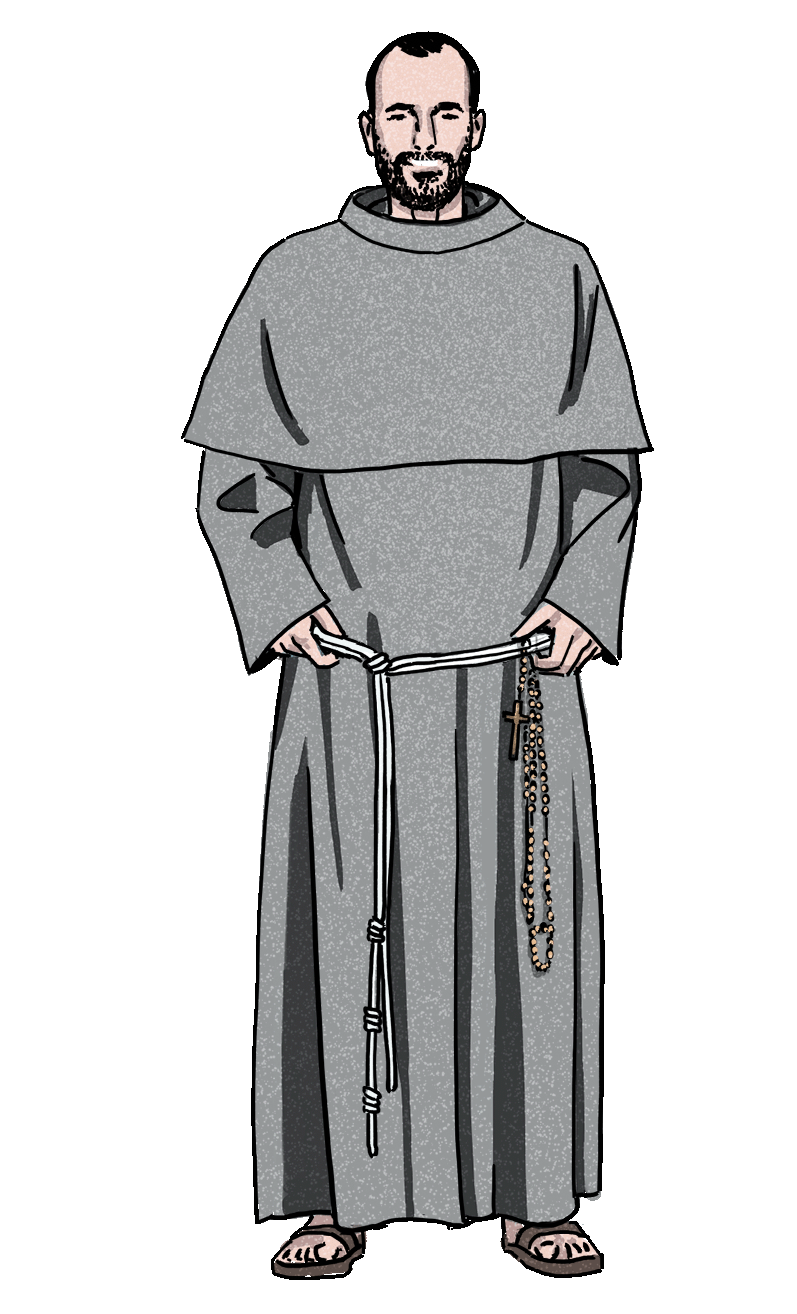
The Order of Friars Minor Conventual
OFMConv (Ordo Fratrum Minorum Conventualium)
commonly: franciscans
habit: gray, black
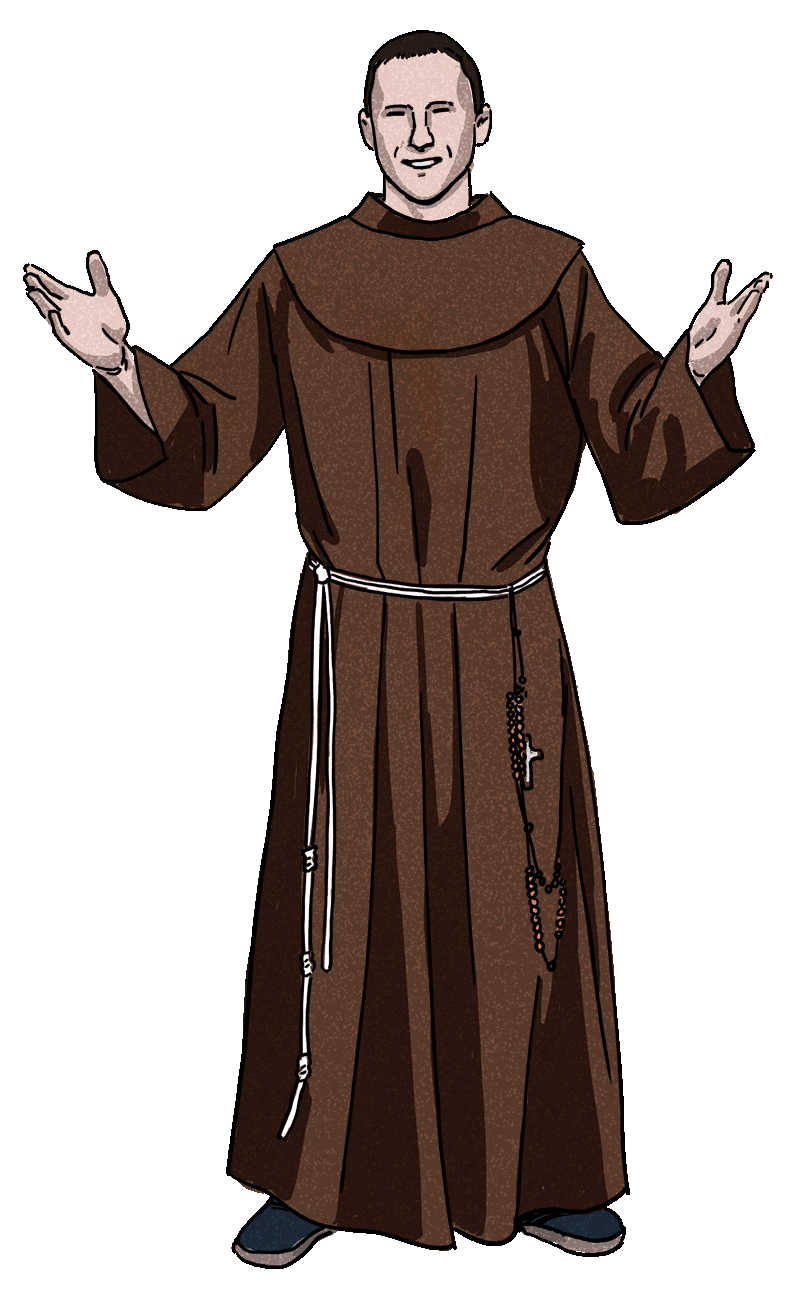
The Order of Friars Minor
OFM (Ordo Fratrum Minorum)
colloquially: friars minor, reformers, observants, bernardines
habit: brown
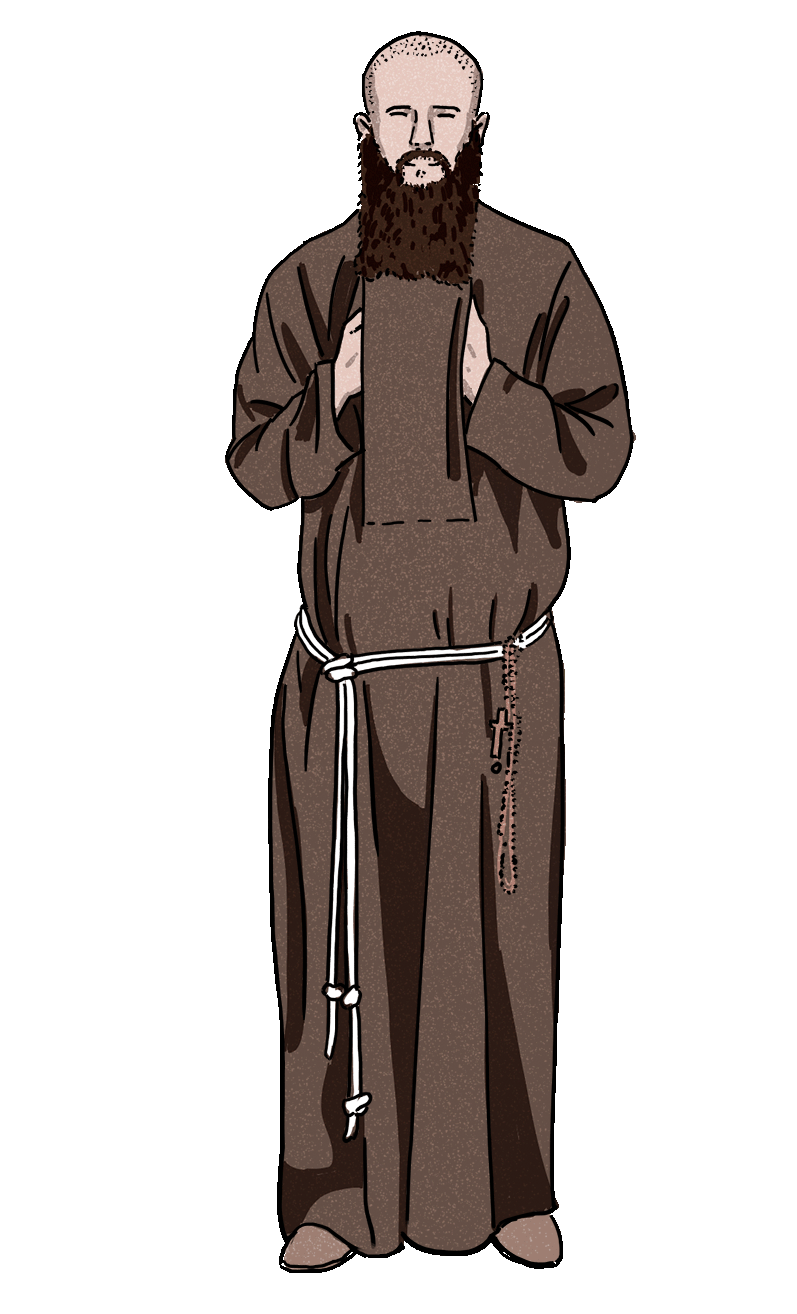
The Order of Friars Minor Capuchin
OFMCap (Ordo Fratrum Capuccinorum)
common name: capuchins
habit: brown
Today however, the different branches of the Order are all united by one desire - to carry out the evangelical mission of St. Francis in their lives. This is symbolized by the white cord they wear with three knots (poverty, chastity, obedience). This is the hallmark of all Friars and followers of St. Francis.

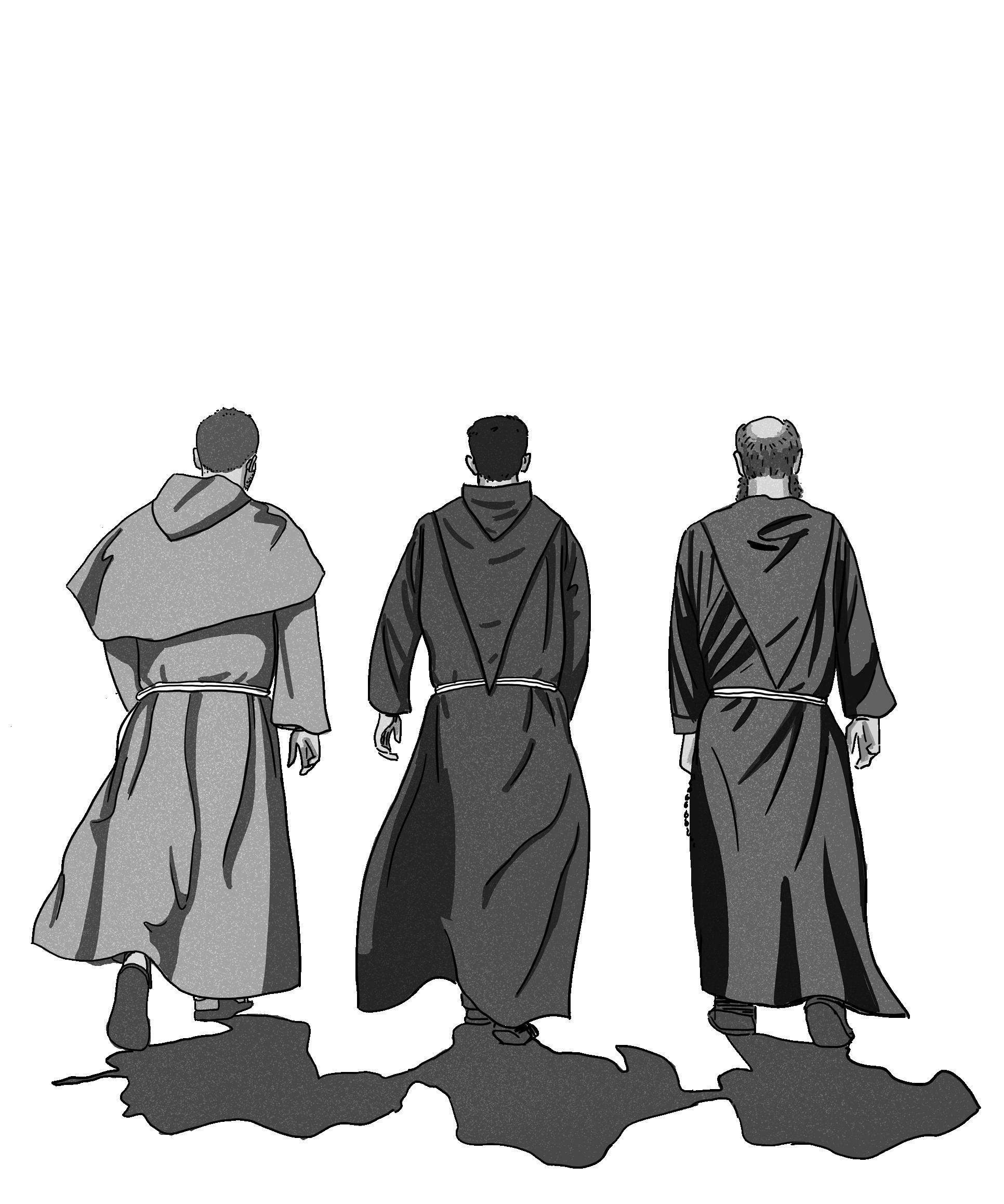
rule and life
“The Rule and Life of the Lesser Brothers is this: to observe the Holy Gospel of Our Lord Jesus Christ by living in obedience without anything of one’s own, and in chastity.
Brother Francis promises obedience and reverence to our Lord, Pope Honorius and his successors canonically elected, and to the Roman Catholic Church. Let the other brothers be bound to obey Brother Francis and his successors.”
This is the entire first chapter of our rule.
You can immediately see what was most important for Francis. It is first and foremost about simply living the Gospel!
This way of thinking, which put the Gospel at the forefront of life, did not come out of nowhere. The mystery of God that seduced Francis was the Incarnation of the Son of God. The astonishing fact that God became man and live in the world, and promised to remain present with us forever in His Church, was a truth that was always at the center of how Francis' thought, acted and perceived reality.
Francis ardently desired
to act like the
One he had come
to know and love.

Francis ardently desired to act like the One he had come to know and love. Jesus Christ… and he wanted His brothers in the community to do likewise. He therefore in love, obligated them to follow The Rule and Life of the Lesser Brothers by: “observing the Holy Gospel (…) by living in obedience; without any possessions of one’s own; and in chastity.”
- St. Francis
source: the Later Rule 1,1-3

obedience
In practice, this vow consists of never acting on our own. Every decision we make is subject to the discernment of our superior.
We do so in imitation of the Lord Jesus, who “humbled himself, becoming obedient to death, even death on a cross”. This path is demanding, but it involves great blessings. The man who obeys God’s love and truth lives in the joyful certainty that he is following the best path to his destination.
life without anything of one’s own
This vow originated in the fact that Francis foresaw how the wrong approach to money was destroying people and relationships. That's why he completely renounces the use of money. Instead, like Christ, he relies on the providence of his Father in heaven and the work of his own hands. This is the path he lead his brothers down.
Today we subsist on the offerings of kind people and on what we earn ourselves. Life without anything of one’s own is also based on the fact that none of us has any money, even the money we have earned on our own. Everything goes into a common cash box, which is overseen by a designated brother. If one of us wants to buy something, he asks for permission for the money needed. This arrangement is an act of humility that guards us against many abuses.
chastity
It's a bit like the marriage union that a man and a woman enter into with each other, except that instead of committing your life to another person, you commit it to God.
When we give ourselves exclusively to God, we are showing Him that He is someone so important and so worthy of loving, that it’s worth making the sacrifice to serve Him alone by giving up one of the most beautiful things He created. The married love between a man and women. This is the way of life that the Son of God also lived, whom Francis imitated and I seek to imitate. And that’s the reason for why we take the vow of chastity.
Francis was also aware that he and his brothers were being called to give others "the fragrant words of their Lord". This only encouraged his companions more to preach the Gospel.
But he stipulated that this is to be done first through the example of one’s life, and then, if necessary, with words. However, these words can’t just be any words. That's why Francis writes in the rule:
“I counsel, admonish and exhort my brothers in the Lord Jesus Christ not to quarrel or argue or judge others when they go about in the world; but let them be meek, peaceful, modest, gentle, and humble, speaking courteously to everyone, as is becoming”.
- St. Francis
source: the Later Rule 3:10-11

Why this approach?
The priority of the Franciscan mission is peace, which is God's deepest desire for every human being.
Peace is not just the successful outcome of arrangements between people. It’s much more than that. It’s everything that is best and most good for human beings.
Anyone who wishes can experience this reality of profound serenity, sought by all of humanity in a variety of ways, because, as Francis repeats in the words of the Apostle Paul; everything "that is in heaven and that is on earth has been given peace and reconciled to Almighty God" in Christ.
Aware that the salvation offered by God is literally at hand, St. Francis asks the Friars of the Order to not judge people “speaking courteously to everyone, as is becoming” so that nothing stands between the God whom the friars serve and every person they meet; to whom God wants to show grace and mercy.
Friars are to listen to each person – their history and experiences, their joys and sorrows – without prejudice and judgment.
They are to do so because God looks with love on everyone. He makes the sun, as the Gospel says, rise on both the bad and the good.

So as long as life goes on, everyone has a chance to repent, and even the most hardened sinner can become a great saint thanks to God's gentle gaze and offer of grace.
To speak “courteously to everyone, as is becoming” is to preach words of truth to people that will help the lost find Jesus Christ, who alone is able to give human life true meaning and endow man with deep peace.
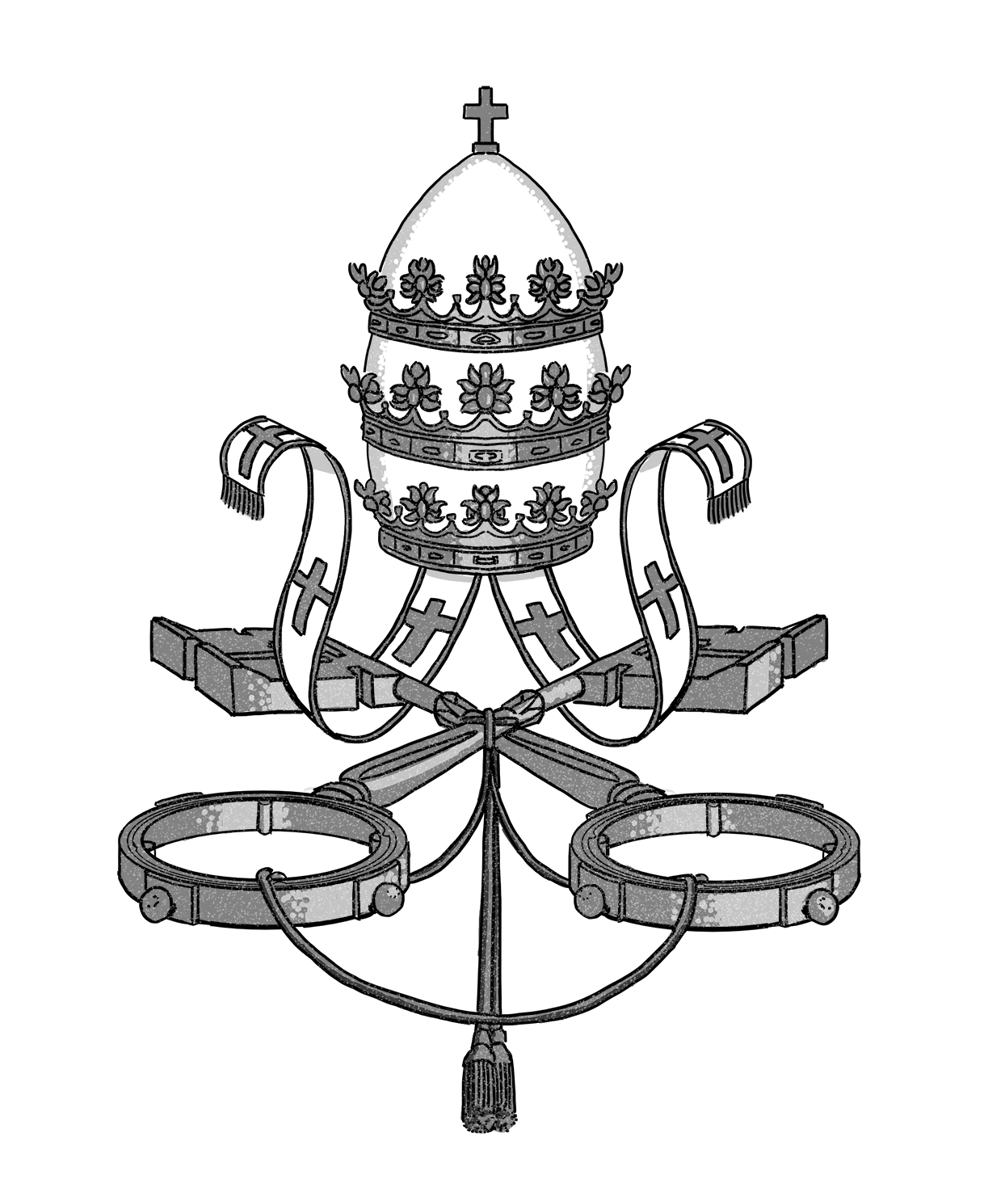

Francis insisted that the brothers should always be Catholic themselves and preach in accordance with the teachings of the Catholic Church, and in this way safely lead people to unity with God.
This is the principle to which we still seek to adhere today. We don’t try to be smarter than the Church, because we know that the grace given by the Lord Jesus to the Apostles continues in the ministry of their successors.
This is our rule and our way of life.
In conclusion, we can say that the most important thing for us is relationship. This is because God Himself is all about relationships. We strive to abide in the relationship with Him to which He has invited each of us according to His will and intention. Following God, who reaches out and establishes relationships, we seek to create relationships with the people we meet, helping them to find that most important and life-giving relationship with Him.
francis
Despite the fact that he referred to himself as
„simplex et idiota”,
and despite the fact that today many would like to picture him as a carefree, undereducated and somewhat detached "friar"; Francis was - for his time - quite well-educated and hard-headed.

He was born in 1181 or 1182 in Assisi, Italy. His parents named him John. But from the very beginning his father called him "Francesco," which means "Frenchman." What was the reason for this?
We can only guess, but perhaps the point is that Peter Bernardone - Francis' father - often traveled to Provence and Champagne in France to buy fabrics which he later traded in his native Umbria, Italy. Regardless of the reason why, the fact remains that Francis identified with the nickname his father gave him. “Francesco.”
In his younger tears, Francis studied at the parochial school at St. George's Church in Assisi and knew Latin at a satisfactory level.
His father tried to make sure that he was well versed in commerce as well since he most likely saw Francis as being his successor of the very profitable family business.
Francis was well-liked by his peers and his young heart burned with dreams of chivalry and knighthood which later spurred him to take part in the battle between Assisi and Perugia.
His dreams of chivalry and knighthood ended with a hard landing. He was taken captive and held for over a year and he was only freed thanks to his father's influence. Soon after, he heard about the pending war that was happening in the region of Apulia, Italy and he departed to try his luck in battle once again. But God had other plans.
While traveling on his way south to the war in 1205, Francis stop in Spoleto to rest for the night. While sleeping there he had a dream where the Lord spoke to him asking: “Who is it better to serve,” God asked Francis, “the Lord or the servant?” Francis answered, “The Lord, of course.” God responded, “Then why are you obeying the servant and not the Lord?” When Francis asked, “Lord, what do you want me to do?” God told Francis: “Go back home.”
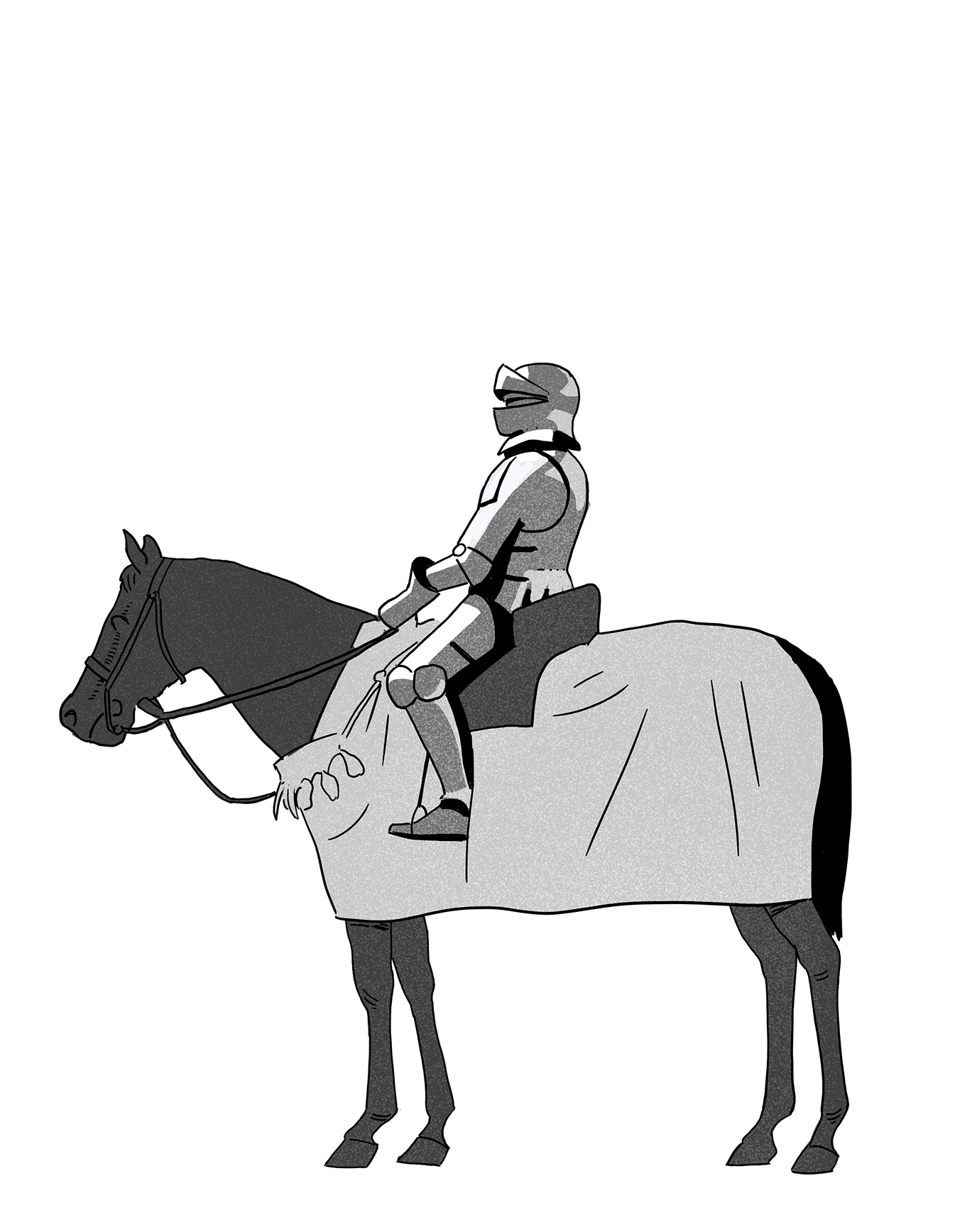

Obeying the Lord, he did not enter the war and returned home to Assisi where his great adventure surpassing his wildest youthful dreams was about to begin.
His experience in Spoleto started him on a path of deep conversion – a path on which God had been imperceptibly leading him – would now lead him to an encounter with a leper near Assisi.


Until that moment, Francis had shunned such people. This time however, something made him stop and approach the poor man. He kissed him and give him all that he had. After this encounter, he became more and more willing to be with marginalized people.
As a result, the young Francis continued to grow spiritually and recognize God’s presence around him, especially in the silence of the surrounding Catholic Churches.
Years later just before his death, this is how he recalled that time in his life:
“And the Lord gave me such faith in Churches that I would pray with simplicity in this way and say: ’We adore You, Lord Jesus Christ, in all Your churches throughout the whole world and we bless You because by Your holy cross You have redeemed the world.“
- St. Francis
source: The Testament, 4-5
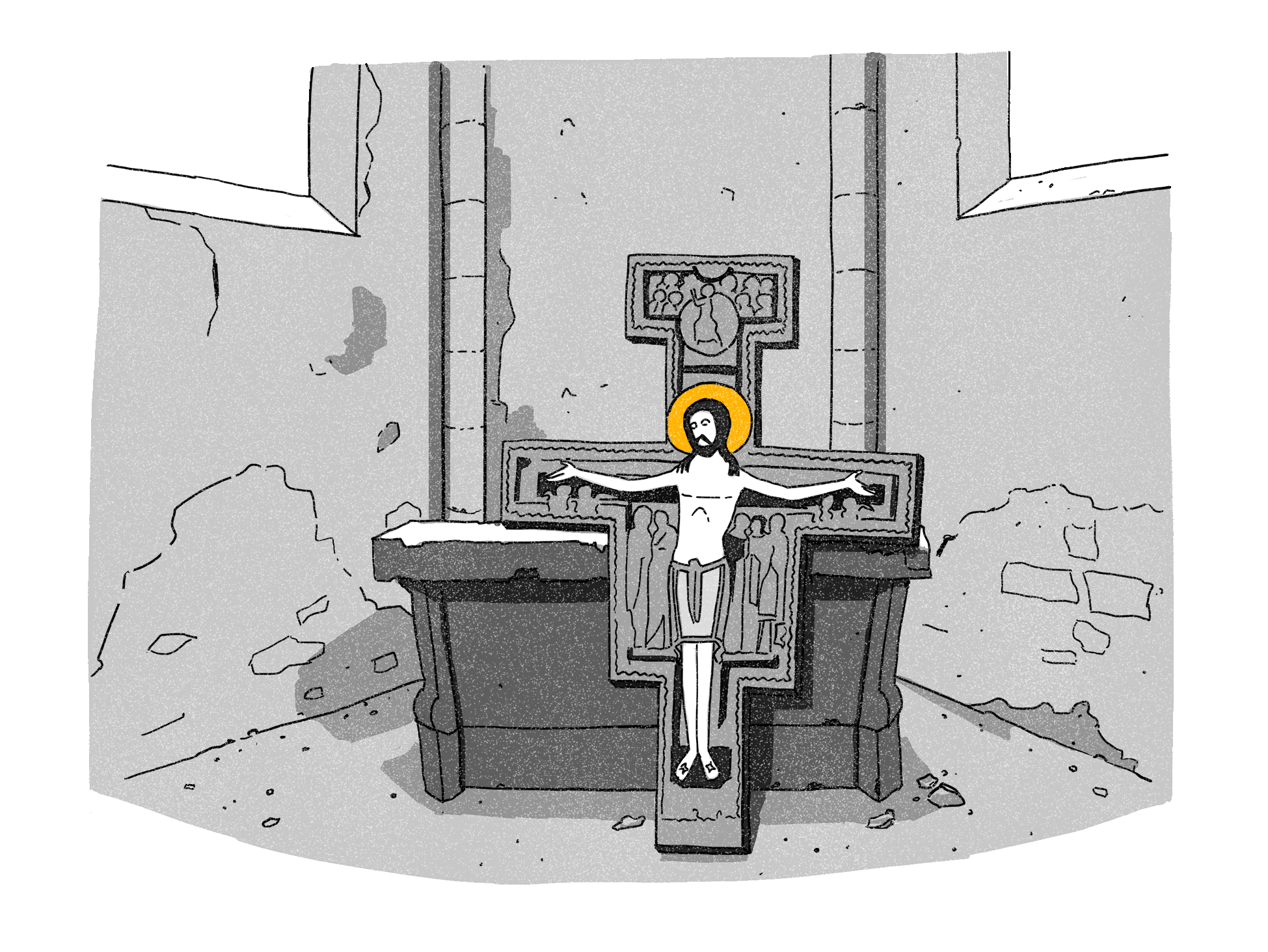
It also pained him to see how the Blessed Sacrament was often kept in very poor conditions in the Churches.
Therefore, he would ask the Priests to properly take care of this greatest treasure. On more than one occasion he would clean these neglected Churches by himself.
It was in one such Church (San Domiano) near Assisi in the Fall of 1205 when Francis was kneeling in front of a cross with an image of the Crucified Christ, that he heard the words of Christ speaking to him from that cross telling him: “Francis, go repair my house, as you see, it is falling into ruin.”
Afterwards, Francis realized that the Church Jesus was asking him to repair was the very Church he was kneeling in… San Damiano, which he rebuilt in 1206. But as the years passed, Francis began to understand the deeper meaning of the words Christ spoke to him from the crucifix. It wasn’t just San Damiano that was falling into ruin, but the entire Church, and he was being called by Christ to “repair” the Church Francis loved so much. It was would be Francis radical approach of embracing a life of detachment from worldly possessions and wealth, and his simple preaching of the Gospel that would later have a positive effect on transforming the Church.


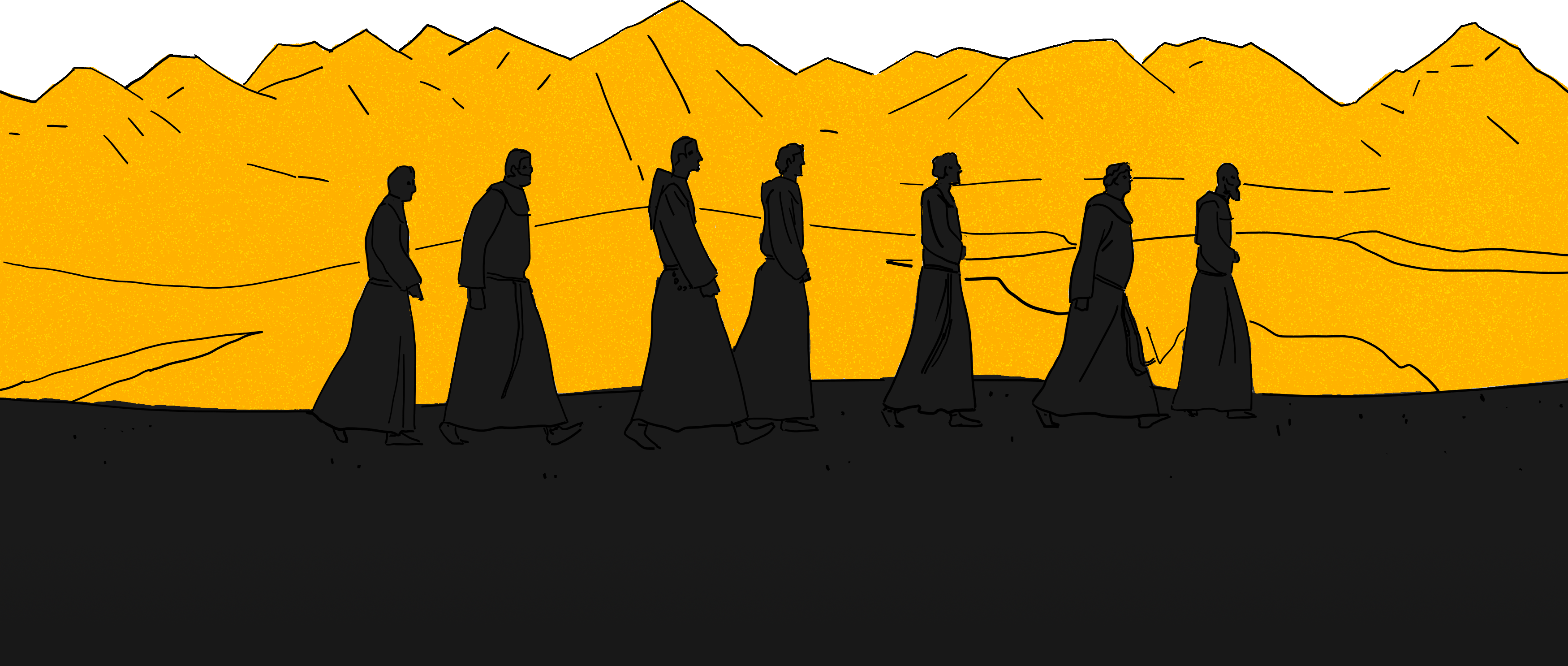
The growth of the community started with the arrival of other men who desired be around Francis and the way of life he was now embracing.
The first of these brothers (in 1208) were Bernard of Quintavalle, Peter Cattani and Giles of Assisi. Attracted by the example of Francis and following the Gospel itself, they began a life of penance and serving the Lord. Soon after they set out on missions to preach the Gospel through their example of life and simple proclamation of the of the word.
By 1209 there were a total of twelve brothers including Francis. These first Franciscans were referred to as "The Penitents of Assisi".
In 1209, after writing a short rule for himself and his brothers to live by, Francis and his bothers humbly traveled from Assisi to Rome to speak with Pope Innocent III to seek his approval for their way of life to be recognised Order in the Church. They presented him with the short rule Francis wrote and asked the Pope to discern whether the rule and path they had chosen was an acceptable way of life in the Church.
After discerning what Francis presented to him, Pope Innocent III approved Francis short rule and way of life thus giving rise to a new Order in the Church. These Franciscans would be called the “First Order” or Friars Minor. When Francis and the brothers returned to Assisi, they went to the Chapel of Our Lady of the Angels (the "Portiuncula") which Francis had also repaired in 1206. This became the "home" of the Friars Minor.
Later in that same year (1209) Pope Innocent III officially ‘pronounced’ that the Franciscan Order would be a recognised Order in the Catholic Church.
As the First Order of Franciscan brothers began to grow, it became clear that the Order and it’s way of life would not just be limited to men only. In 1210 a young girl from Assisi named Clare Offreduccio heard Francis preach. After hearing him she desired to follow the same path of conversion that Francis had established with his brothers.
In the months that followed Clare would find refuge on her path to conversion at the "Portiuncula" and be taught by Francis about the Orders way of life. It would be on Palm Sunday in March of 1212 that Clare would leave her father’s house and receive the religious habit from Francis himself. Soon after, other women joined Clare in living the Franciscan way of life and two months later they settled at San Domiano which became their home. Thus began the foundation of the Second Order of Franciscan.
In 1215 Francis gave Clare and her companions additional guidelines for the community with Clare accepting the title and role as Abbess of San Damiano. At the time they were called the Poor Ladies of Assisi or the Ladies of San Damiano. We know this community today as the Poor Clare Sisters.
The life and example of Francis and the brothers, and Clare the sisters, began to inspire people who were leading normal everyday lives. People felt comfortable among the Franciscans and were willing to stay with them and support them. This is how, over time, the Third Order (lay people) was created. It brought lay people together who under the guidance of the First and Second Order brothers and sisters, wanted to embrace the Franciscan ideals in their own lives.
First Missions Outside Italy
It would be from the "Portiuncula" that the Friars began their first missions outside of Italy. This kind of missionary spirit and zeal for the Gospel had been part of the community of brothers from the beginning.
The goal of the first missionary expedition was Syria. But unfavorable weather made it impossible to sail to southeast to Syria.
On another occasion, Francis wanted to go to Morocco through Spain. This time an illness prevented him from going.
It wasn’t until after the Fourth Lateran Council in 1215 that their missionary journeys happened in number.
The brothers then set off for the Middle East, Morocco, Spain, Germany and Hungary.
Francis himself was set to lead a mission in France, but he was diverted from this path by a high ranking dignitary in the Church who convinced him that he would do more service for God in Italy.





However In 1219, during another of the Crusades, he set off for Egypt to meet with the Sultan Malik al-Kamil. But unlike the Crusaders, he was completely unarmed and defenseless. This evangelical initiative of an unprecedented peaceful nature for the time, was met with great appreciation from the Muslim leader.
Although the Sultan did not convert, he spoke words full of openness, which undoubtedly testify that thanks to Francis, he was touched by the grace of God. His words to Francis went like this: "Pray for me, Francis, that God will reveal to me this faith and this spirit that is closer to him."

However In January of 1220 five brothers were killed by Muslims in Morrocco. They became the first Franciscans to be martyred. Upon hearing the news, Francis is said to have responded, "Now I know for sure that I have true ‘lesser brothers.’"
These events in Morrocco left an indelible mark on a young Portuguese man, who inspired by these martyr’s, joined the community of the Friars Minor. Twelve years later he would be known as St. Anthony of Padua. In 1221 and 1222, Francis traveled throughout Italy preaching the Gospel and its way of life.
new order
By the year 1223 the Franciscan Order was experiencing tremendous growth. The Order at that time had already grown to five thousand friars. So in 1223; Francis wrote a definitive formal Rule that would bring more structure to the Order of Friars Minor.
This rule for the Order was created in stages over a period of time and discussed among the brothers. After much discussion and discernment, Francis traveled to the peaceful hermitage at Fonte Colombo. It would be there over the course of several months that Francis would write final document and Rule for the Order.
This rule for the Order was created in stages over a period of time and discussed among the brothers. After much discussion and discernment, Francis traveled to the peaceful hermitage at Fonte Colombo. It would be there over the course of several months that Francis would write final document and Rule for the Order.
And so it was that on November 29, 1223, Pope Honorius III issued an official papal bull approving this Rule for the Order.
It would also be in that same year at Christmas that Francis would create and organize the first "living nativity scene" with live animals. He desired to do this to help bring people closer to the mystery of the incarnation and God’s presence with us in this world.
final years
In late August and early September of 1224 Francis was on a long retreat at mount La Verna (north of Assisi). It was there on or around the time of feast of the Exaltation of the Holy Cross (September) that he would experience an intense encounter with God. While he was fasting and praying, he looked up in the sky and saw a Seraph (Seraphs are the angels closest to God) and from this Seraph he received the stigmata wounds of Christ's.

As the great Franciscan St. Bonaventure (1221-1274) tells us in his official autobiography on St. Francis: “While Francis was praying on the mountainside, he saw a Seraph with six fiery and shining wings descend from the height of heaven. And when in swift flight the Seraph had reached a spot in the air near the man of God, there appeared between the wings the figure of a man crucified, with his hands and feet extended in the form of a cross and fastened to a cross… When Francis saw this, he was overwhelmed and his heart was flooded with a mixture of joy and sorrow. He rejoiced because of the gracious way Christ looked upon him under the form of a Seraph, but the fact that he was fastened to a cross pierced his soul with a sword of compassionate sorrow.”
The Franciscan brothers close to Francis also confirmed his stigmata. Francis also gave expression to his experiences and encounters by writing "The Praises of God." He also wrote to Brother Leo by writing a "Blessing for Brother Leo." These documents which were written with St. Francis’ own bleeding hand from stigmata are still kept in the Assisi Friary today.
The next two years following his receiving the stigmata was a difficult time for Francis. In addition to bearing the marks of Christ’s passion on his body, he was also suffering from many other ailments. Despite his suffering, he did not give up and continued traveling the countryside on a donkey preaching the Gospel.
In 1225 about a year before his death, with his eyesight deteriorating and almost bind, Francis wrote one his most well know text. "The Canticle of the Creatures." Francis would spend the last months of his life in his hometown with most of that time being spent in the Chapel of Our Lady of the Angels, also known as the "Portiuncula." It was there under the maternal care and protection of the Mother of our Lord, Mary, that he felt at peace.
Francis died on a Saturday evening on October 3, 1226.
Just before his death, he wrote a "Testament" in which he sought to convey what was truly most important to him.
spirituality
If then, we are to talk about what was most important to Francis,
without a doubt we should start with God.
Everything that happened in Francis' life had its beginning and end in God. It was God who stirred the young Francis Bernardone's heart into action. It was God who lead Francis to lepers. It was God who made Himself known to Francis in the silence of the Churches of Assisi. It was God who aroused the brothers to join Francis, and it was God who told Francis how they should go out to the world.
Francis liked to talk about God and to talk to God:
“All-powerful, most holy, most high, supreme God: all good, supreme good, totally good, You Who alone are good.”
- St. Francis of Assisi
source: The Praises To Be Said at All the Hours, 11a.
On Mount La Verna, Francis reached the apex of experiencing that God came first in his life.
It was there that Francis met God "face to face."

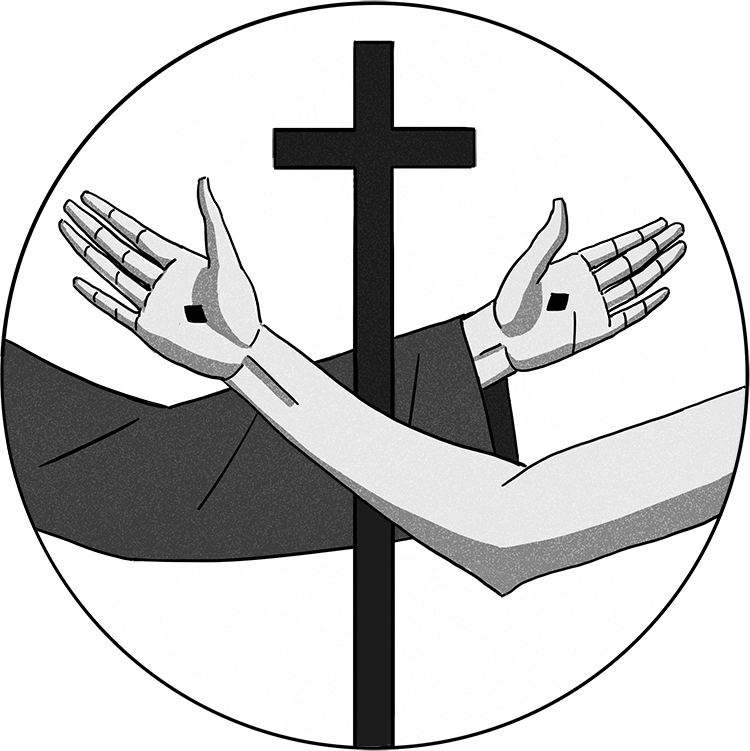
The closeness of this encounter is evident by the stigmata that was etched into Francis' body. With his bleeding hand he then wrote "The Praises of God." It was his attempt to describe the immeasurable richness of the depth of the One he had just met.

Admiration for God led Francis to admiration for God’s works of creation. This is probably the most recognizable element of his spirituality.
Francis is famous for calling all creatures brothers and sisters. He encouraged them to give glory to God together with him. He urged those that were more dangerous not to harm anyone. He wanted the peace that comes from recognizing the reign of God also to prevail in the natural world.




The beauty of the world seduced him and led him directly to God. He always saw creation in relation to its Creator.
The best testimony to this is in his words in "The Canticle of the Creatures."
What captured Francis was the humility of God. He saw it above all in the silent presence of the Lord of heaven and earth in the Blessed Sacrament:
“O wonderful loftiness and stupendous dignity! O sublime humility! O humble sublimity! The Lord of the universe, God and the Son of God, so humbles Himself that for our salvation He hides Himself under an ordinary piece of bread! Brothers, look at the humility of God, and pour out your hearts before Him! Humble yourselves that you may be exalted by Him! Hold back nothing of yourselves for yourselves, that He Who gives Himself totally to you may receive you totally!”
- St. Francis
source: Letter to the Entire Order 27-29
At the very beginning of Francis’ journey, God enlightened Francis to help him recognize His presence in the neglected Churches around Assisi. Francis recalls those moments in this way:
“And the Lord gave me such faith in churches that I would pray with simplicity in this way and say: ’We adore You, Lord Jesus Christ, in all Your churches throughout the whole world and we bless You because by Your holy cross You have redeemed the world.“
- St. Francis
source: The Testament, 4-5
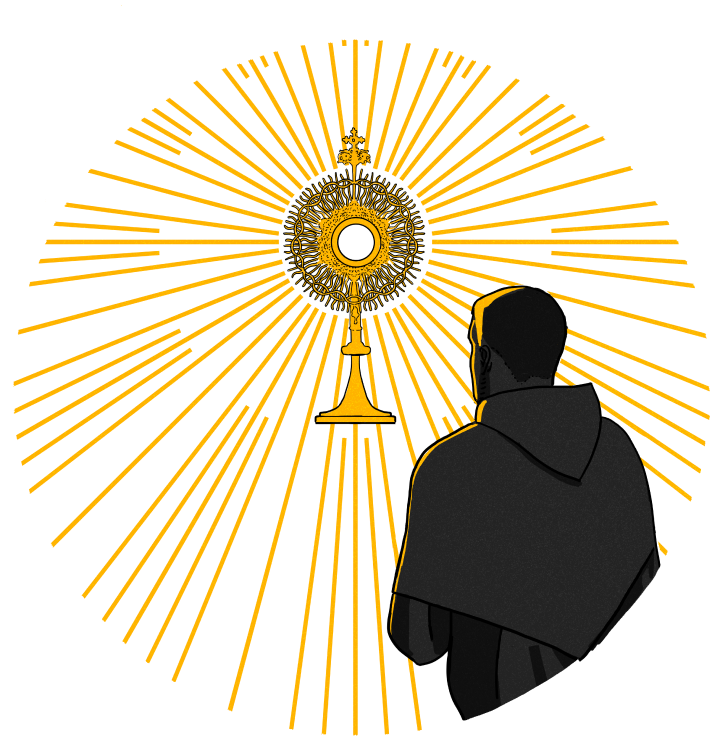
The mystery of God's presence in the Blessed Sacrament has always been linked to the Sacramental Priesthood established by the Lord Jesus.
Deeply aware of this, Francis, who was not a priest himself, spoke thus to his brothers who were ordained:
“See your dignity, [my] priest brothers, and be holy because He is holy. As the Lord God has honored you above all others because of this ministry, for your part love, revere and honor Him above all others. It is a great misery and a miserable weakness that when you have Him present in in this way, you are concerned with anything else in the whole world!”
- St. Francis
source: Letter to the Entire Order 23-25
Francis also over time developed a love for Priests by coming to the realization that the grace and authority that the Apostles (the first Bishops) possessed was bestowed directly upon them by the Lord Jesus himself;
and it was the Apostles who handed on this authority through the Sacramental Priesthood that is still present in the Church today.
Therefore, Francis insisted on having respect for the Priests, obedience to them, and to the Bishops of the institutional Church:
“We must also visit churches frequently and venerate and show respect for the clergy, not so much for them personally if they are sinners, but by reason of their office and their administration of the most holy Body and Blood of Christ which they sacrifice upon the altar and receive and administer to others.”
- św. Franciszek
source: Letter to the Faithful (II) 33

Moreover, in his Testament just before his death, Francis wrote:
“Afterwards the Lord gave me, and gives me still, such faith in priests who live according to the rite of the holy Roman Church because of their orders that, were they to persecute me, I would still want to have recourse to them.
And if I had as much wisdom as Solomon and found impoverished priests of this world, I would not preach in their parishes against their will. ‘And I desire to respect, love and honor them and all others as my lords. And I do not want to consider any sin in them because I discern the Son of God in them and they are my lords.”
- St. Francis
source: Testament 6-9
The reasons for this particular approach were clear to Francis:
“And I act in this way because, in this world, I see nothing corporally of the most high Son of God except His most holy Body and Blood which they receive and they alone administer to others.”
- St. Francis
source: Testament 10
The undeniable center of Francis' life was the Lord God and His Sacraments. And it is this same God who continues to come to us in the Sacraments of His one true Church.
And because of the work God started in him, Francis desired to bring everyone to this Church.
Francis very much wanted people to experience the same peace and joy that he had discovered in seeking first the Kingdom of God. He did this despite all of the difficulties that existed in the Church. This was also the path he set for his brothers to follow, and that path has continued to this day.
We must also include in the encounters and experiences of Francis life, the "Mother of the Church," the Blessed Virgin Mary, whom Francis revered and respected from the very beginning his conversion. He called her "the Virgin made Church; the Palace, the Tabernacle, the House, and the Robe" of the Most High. This reference and devotion to Mary has been handed-on by the Franciscan brothers throughout the eight centuries of the Order's existence.
One example of this devotion to the Blessed Virgin Mary within the Order can be found in Blessed John Duns Scotus (1266-1308). His love and devotion to Mary contributed greatly to the theological development and justification for the Church later declaring the dogma of the Immaculate Conception of the Blessed Virgin Mary. His theological work on the Immaculate Conception is still revered to this day.
However, it seems that in service and devotion to the Mother of God, no one can surpass St. Maximilian Maria Kolbe. Not without reason he was called the Madman of the Immaculate, and his life of fidelity to his beloved Lady culminated in his martyrdom on August 14, 1941, in Auschwitz, on the eve of the Assumption of the Blessed Virgin Mary.



